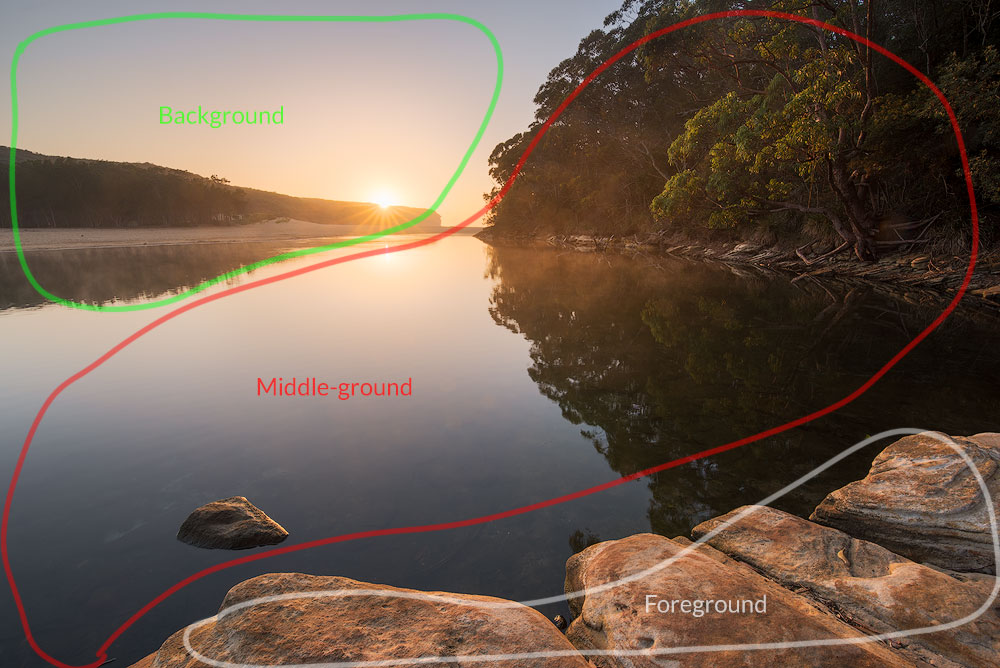How to Create Depth in Photos Using Layers
FACT-CHECKED ✅
In photography, creating depth transforms flat, two-dimensional images into visually engaging, lifelike compositions. Depth draws viewers into a photograph, making them feel as if they could step into the scene themselves. One of the most effective ways to achieve this is by employing the concept of layers - a technique that adds complexity, context, and emotion to your images. This article unpacks the art and science of layering in photography, providing actionable insights to elevate your craft.
 |
| Depth draws viewers into a photograph, making them feel as if they could step into the scene themselves. (📷 Jasen Miller) |
Depth in photography refers to the illusion of a third dimension within a flat image. While photographs are inherently two-dimensional, skilful use of compositional techniques can simulate three-dimensionality, enriching the viewer's experience. Layers play a crucial role in achieving this effect by segmenting a scene into foreground, middle ground, and background. This visual separation creates a sense of space and perspective that captivates the viewer’s attention and evokes emotional resonance.
The Science of Layers in Visual Perception
Our brains are wired to perceive depth. Depth cues like size, overlapping objects, and relative motion help us navigate the world. In photography, layers mimic these natural depth cues, guiding the viewer's eyes through the image. By intentionally structuring your composition into distinct visual planes, you create a pathway for the eye to follow, leading to greater engagement and narrative impact. Research in cognitive science confirms that layered compositions hold a viewer’s attention longer, as they provide more information for the brain to process.
 |
| (📷slideserve) |
Building Layers in Your Composition
To use layers effectively, start by identifying elements in the scene that belong to the foreground, middle ground, and background. These elements should complement each other while contributing to the overall narrative. For example, in landscape photography, rocks or flowers can anchor the foreground, trees or hills may occupy the middle ground, and a sunset or mountain range often defines the background. Each layer adds a piece of the puzzle, enriching the story your photo tells.
 |
| Start by identifying elements in the scene that belong to the foreground, middle ground, and background. (📷 Anton Gorlin) |
When shooting portraits, layers can be created through thoughtful positioning. Place your subject in the middle ground, surround them with objects in the foreground, and utilise background elements to provide context. The interplay of these planes creates a dynamic and immersive visual experience.
 |
| Layers can be created through thoughtful positioning when shooting portraits. (📷 Motta123) |
Light and Colour in Depth Creation
Light and colour are powerful tools for enhancing depth through layers. Directional lighting - such as side or backlighting - creates shadows and highlights, emphasising the separation between planes. This interplay of light and shadow adds texture and volume, making each layer stand out.
 |
| Directional lighting emphasises the separation between planes by creating shadows and highlights. (📷zastavki) |
Similarly, colour contrast helps distinguish layers. Warm tones tend to advance toward the viewer, while cool tones recede, a phenomenon rooted in atmospheric perspective. By carefully managing colour temperature and tonal contrast, you can amplify the perception of depth. This principle is supported by studies in colour theory, which highlight the psychological effects of warm and cool hues on spatial perception.
 |
| Colour contrast helps distinguish layers. (📷Chris Parker) |
Using Depth of Field for Layering
Selective focus is another essential technique for creating depth. By adjusting your camera's aperture, you can control the depth of field - the area of the image that appears sharp. A shallow depth of field isolates the subject by blurring the background, emphasising the layers in focus. Conversely, a deep depth of field ensures sharpness across all planes, allowing the viewer to explore each layer in detail. Both approaches can be used creatively to align with your artistic vision.
 |
| By adjusting your camera's aperture the area of the image that appears sharp. (📷 Glenn Nigel) |
The Narrative Power of Layers
Beyond aesthetics, layers also serve a narrative function in photography. Each plane can tell its part of the story, adding context and meaning. For example, in photojournalism, a layered composition might juxtapose a subject in the foreground with an unfolding event in the background, creating a powerful visual dialogue. In fine art photography, layers can evoke emotions or convey abstract ideas, inviting viewers to interpret the image on multiple levels.
 |
| Layers also serve a narrative function in photography. (📷 Tony Corocher) |
Path to Mastery
Mastering layers requires practice and experimentation. Start by studying examples from renowned photographers who excel in depth creation. Analyse how they use foreground elements to frame their subjects, the balance between light and shadow, and the interplay of colours across planes.
 |
| Start mastering layers by studying examples from renowned photographers who excel in depth creation. (📷 Steve McCurry) |
When shooting, experiment with different perspectives and focal lengths to see how they affect the layering of elements. Wide-angle lenses often exaggerate the sense of depth, while telephoto lenses can compress the layers, creating a different but equally compelling effect. The key is to remain curious and flexible, adapting your approach to the scene and your creative goals.
 |
| Creating depth transforms flat, two-dimensional images into visually engaging, lifelike compositions. (📷 Gregory Crewdson) |
Creating depth through layers is a transformative skill that can elevate your photography from ordinary to extraordinary. By understanding the principles of visual perception, leveraging light and colour, and experimenting with depth of field, you can craft images that captivate and inspire. Whether you're shooting landscapes, portraits, or street scenes, the strategic use of layers will not only enhance your technical proficiency but also deepen your storytelling capabilities.
⭐⭐⭐



Comments
Post a Comment